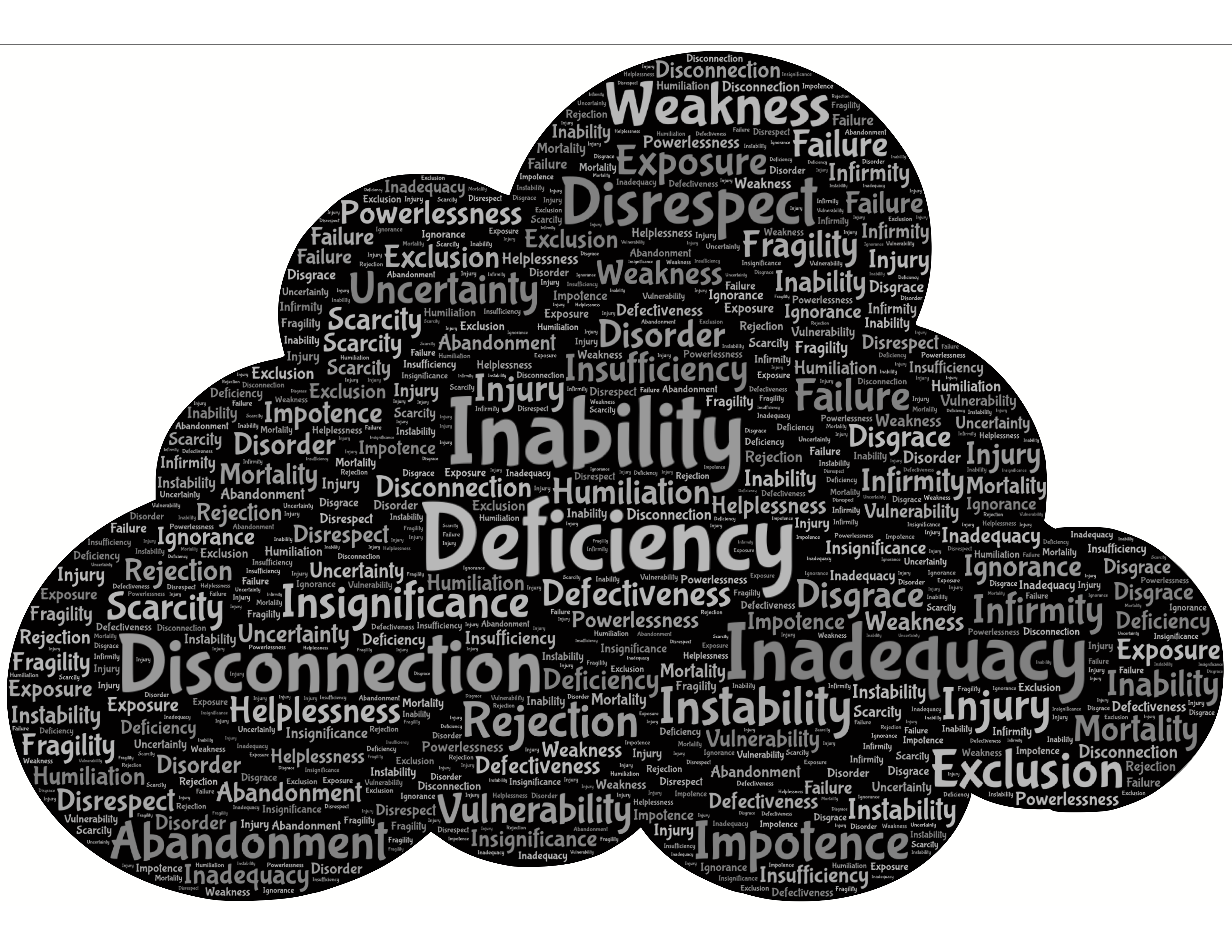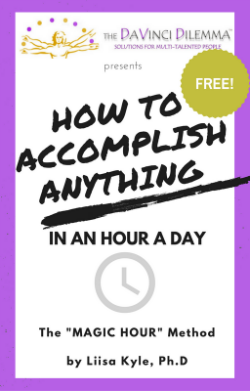
CCO creative commons image via pixabay
Do you have a negative little voice in your head? Do you harbor an internal critic that tells you something you’re doing isn’t good enough or calls you nasty names or fans your deeper fears? It’s not pleasant and it doesn’t play fair. It tends to kick us when we’re at our most vulnerable. It’s natural to have some fears and doubts but when they run amuck, it can harm our health and well-being. They can squelch our creativity and kill our productivity. It is vital that we learn to detect and quell our Inner Critic when it arises.
Here’s how:
1. Understand the purpose of your Inner Critic.
As harsh as your Inner Critic may be, know that it’s actually trying to help you. It’s your brain trying to protect you from unknown perils. It uses fears and doubts to prevent you from taking risks. It’s an ancient part of our biology that developed to prevent us from tangling with predators or consuming possible poisons or wandering away from safety.
In modern life, however, it can be problematic. It can get triggered by emotional stress that has little to do with our physical well-being. When it perceives pressure — to do well, for example — can initiate “fight or flight” biochemical responses, fears, and doubts. If you don’t recognize what’s happening, this internal danger-detector may cause you to walk away from an exciting opportunity or self-sabotage yourself on a challenging project.
That’s why it’s so important to pay attention. When you detect fears and doubts, pause. Ask: is this my Inner Critic?
2. Recognize your Inner Critic.
Pay careful attention to what’s going on in your head. To what extent are your thoughts and feelings appropriate for what’s going on?
Our Inner Critics tend to be divas so be on the lookout for exaggerated reactions and thoughts of impending doom: If you are feeling inexplicably negative about your progress or project, it might not be valid. Your criticisms and concerns might just be your Inner Critic running amuck. (Danger! Danger! She’s trying something new! We might crash and burn!)
Once you detect it, listen to it: What does your Inner Critic tend to say? With what tone? Does this inner voice sound like anyone in particular? A parent perhaps or a disapproving teacher or boss?
Of what is your Inner Critic afraid? Failure? Success? Embarrassment? Dismemberment by wolves?
Also be aware of which situations tend to triggers your Inner Critic. Under what circumstances is it more likely to arise? When you are most vulnerable to it?
3. Understand its impact on you.
How do you respond to your Inner Critic? Does it paralyze you or spark you into action? Does it make you sad or hopeless? Does it frustrate or enrage you? How does it affect your stress level? Your health and well-being?
For that matter, how does it affect others around you?
4. Name your Inner Critic.
If you literally give a name to your Inner Critic, you can call it out — and laugh at it — when it arises.
I call my own inner voice Picky McStrict. Picky is the one who shouts “Idiot!” when she finds a typo in a Facebook post I’ve written. Picky is the one muttering “you are lousy at this” when I’m doing something for the first time. Picky has very strict rules about the Herculean struggle and toil required before one can “earn” success.
Picky means well — and frankly, she’s helped me accomplish a lot — but she’s really more of a hindrance. She makes me doubt myself. She sucks the enjoyment out of the task at hand. She applies unhelpful stress to me and those around me.
I’ve learned to recognize her not-so-dulcet tones and dismiss them, accordingly. Okay, sometimes I have to give her a stern talking to…but the point is she is no longer driving the bus. I am.
My clients use names like “Sir Harps-a-lot”, “Ursula”, “Poopyhead”, “Nick the Dick”, “Lady Gwendolyn”, “El Stupido,” and “Mr. Dibbs my Grade 2 teacher” to address their own inner voices. I invite you to find an appropriate name for your inner nemesis — and to practice recognizing it when it arises.
5. Challenge your Inner Critic.
Dispute the fears and doubts as soon as you detect them.
It’s helpful to actually write out whatever your Inner Critic is saying, then analyze each statement. Is it valid? What evidence is there to the contrary? Might the opposite be true?
Should you choose to engage this voice in conversation, you can expose just how ludicrously harsh it is — and put it in its place. Use two different pens to actually write out the conversation. Be candid — and have fun with it.
For example:
Sir Harps-a-lot: This is not nearly good enough.
You: Aha! I know that voice! I hear you, Sir Harps-a-lot.
Sir H: Well, I’m concerned for your professional reputation. Your work isn’t up to snuff.
You: “Up to snuff.” You sound like my sixth grade teacher. The one who marked up my homework with red ink.
Sir H.: He and I go way back. We don’t want you embarrass yourself with a sub-par performance on this project.
You: What I’m doing is better than what 99% of people on the planet could be doing, under the same circumstances.
Sir H.: You could do better than you are.
You: Possibly. But not without making myself sick and/or making my colleagues sick of me. As it is, I catch them cringing when I ask them to make adjustments.
Sir H.: See, the project is tanking and your co-workers know it.
You: Wow. Harsh, much? The project is not tanking. We just have to work out some kinks and we haven’t yet found solutions.
Sir H.: See? You’re failing. You’re not good enough to do this project.
You: I am plenty good enough for this project. I am a well-trained, competent person doing the best I can, given the time frame and resources I’ve been given.
Sir H.: What if your work isn’t good enough? What if you lose your job and nobody else will hire you?
You: First, I’m not going to lose my job. Second, if I did, there are other jobs out there. Or I could start my own business. This project does not define me or my career. It does not determine my future.
Sir H.: I’m just trying to help.
You: Thanks but you’re not helping. You’re making me doubt myself and my abilities.
Sir H.: Gosh, I didn’t mean to. I just want you to be safe and happy. Um. I’m sure your project will turn out fine.
You: Yes, it will. Now please go away.
***
Activity: Do yourself a favor and take a few moments to write out answers to the following questions:
1. What kinds of things does your Inner Critic tend to say?
2. What tone does your Inner Critic use?
3. Who does your Inner Critic sound like?
4. Of what is your Inner Critic afraid?
5. What situations tend to trigger your Inner Critic?
6. Name your Inner Critic so you can call it out — and laugh at it — when you hear it.
Henceforth, I shall call my Inner Critic_________________
7. Going forward, be on the lookout for your Inner Critic. When it arises, pause. Write out what it’s saying. Refute each statement with facts and evidence to the contrary.
***
*****
Want to re-publish this article? Go for it – just include the author’s name, a link to this original post and the following text blurb:
Are you struggling with too many talents, skills, ideas? You may have The DaVinci Dilemma™! Find tools, fun quizzes, coaching, inspiration and solutions for multi-talented people at http://www.davincidilemma.com/ .





This is a great resource, I will share it with my clients and readers. Thanks for putting it together.